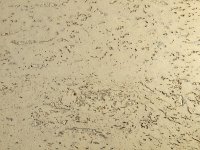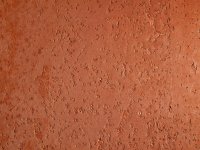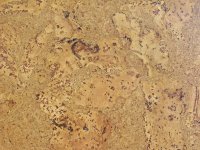Cork Flooring
Cork flooring -- have you ever considered it as an option in your home? If you're in the market for floors and want something a bit different, cork might just provide the change you're looking for.
Cork has a varied personality and isn't limited to the bland, uniform appearance you see on bulletin boards. Beyond looks, it also has a number of positive attributes that help make the home a little more comfortable and healthier.
If this unique floor choice piques your interest, read on for more cork flooring information and find out whether it's a good option for your home.
What Is It And Why Would I Want It On My Floor?
Cork floors are made from the bark of the cork tree, the same stuff that's used to make wine corks. The cork oak grows in the Mediterranean region and has the unique trait of being able to give up its bark every 9 or 10 years without being harmed.
Most floors are made with a thin cork veneer that contains the visual patterns and/or colors which lie on top of another layer of cork. That underlying layer is made up from the remnants of the production of other cork products. These byproducts are typically small cork granules that are combined with a binder, typically a polyurethane, to form a thin sheet.
If you didn't know about or hadn't considered using cork for a flooring material here are a few reasons why you might want to take a closer look.
- Numerous Benefits - cork is resilient, meaning its got give and is more comfortable to stand on than harder surfaces. It's naturally antimicrobial, moisture resistant, flame retardant and insect resistant thanks to a waxy substance called Suberin, an inherent part of cork's makeup.
It's a good sound and temperature insulator because of its cellular structure which is basically a honeycomb of millions of tiny air pockets. This makes it a good choice for floors that are above other living spaces - you won't hear the clunk and clatter of footfalls above you like you would with a wood or tile floor. It's even used as an underlayment under other floor types to reduce sound transmission due to its sound insulating qualities.
- Low Maintenance And Renewable - cork floors are covered in either a polyurethane or wax coating to provide a wear surface that increases its durability and longevity. Typical care consists of just sweeping or vacuuming and damp mopping.
When the protective topcoat of a cork floor begins to show wear and tear it can be easily recoated, a task that can be done by the homeowner.
- Interesting Visual Effects And Colors - The appearance of cork flooring is unique and somewhat unconventional. It's something that you either find appealing or you don't.

It's characterized by an infinite variety of different patterns, anything from irregular swirls to patches to stripes that resemble bamboo.

The natural color is in the tan family but there is a range of shades from darker brown to light tan. Cork is baked to produce variations in the natural color (longer bakes for darker tones) and it can also be colored (dyed) to any shade in the rainbow.


Now to balance out the equation, there are a few characteristics of cork that you should consider and we'll talk more about them in the section below. Some people might view them as "negatives" and reasons to shy away from cork while others might see them as considerations that need to be understood about the nature of living with cork floors.
What Should I Know About Cork Flooring Before Buying?

Depending on your tastes, cork floors look nice, they're comfortable, easily installed and bring with them a number of other benefits. But there are other things you should consider too beyond its looks and inherent benefits.
Understanding the following details will get you more acquainted with this type of flooring and help determine whether or not it's really for you.
- Quality
Like anything else, the quality of cork floors will vary. One characteristic that affects quality is the cork's density. It's measured in either kg/m3 or lbs/ft3 (essentially a measure of how much cork is packed into a given volume).A good density rating is 500 kg/m3 or 30 lbs/ft3 and higher. Some manufacturers make this readily known in their product literature but others do not. Look for the technical specification links or PDF documents on the manufacturer's website to locate this information if it's not readily apparent.
The type of finish that's used on top of the cork surface will also vary from product to product. Several coats of a polyurethane or acrylic finish protects the cork surface. More coats are better, and the quality of the finish will determine the longevity and durability of the floor, all else being equal.
- Glued And Glueless Installation
Cork floors are made in two forms: glued and glueless. Glued floors are made up of tiles, their size varying among manufacturer, which are glued down to the subfloor. Glueless cork is very similar in construction to laminate floors. The cork layer is fused to a high density fiberboard core to form planks which are assembled by snapping them together.
 Examples Of Glue-Down Tiles And Glueless Planks
Examples Of Glue-Down Tiles And Glueless PlanksMost tiles and glueless planks are pre-finished with either a polyurethane or wax coating although you can buy unfinished tiles and finish them once the floor is installed. The benefit of finishing them in place is that all the seams between the tiles/planks are sealed making for a nice water-tight floor. Some manufacturers even suggest putting a finish coat on top of pre-finished tiles for an added measure of durability.
- Appropriate Room Selection And Product Choice
Flooring choices are partly dependent on room location and cork is no different. Although it's pretty versatile, the type of cork product will be determined by the room choice.Below-grade applications like a basement require the use of a glueless floor. Glue-down tiles that are finished in place are more appropriate for a bathroom because of the protection offered by the polyurethane coating and the absence of the fiberboard core on glueless planks that can be damaged in wet environments.
- Natural Color Variations
Natural cork tiles have some color variation even within a specific 'color line' and they won't all be exactly the same shade from tile to tile. The resulting appearance on a completed floor will be that you may see some diversity in color tone from tile to tile.Manufacturers strongly recommend that you unpack all tiles from the packaging and inspect them upon receipt to make sure you're satisfied with any shade variation that might exist (as well as any other defects or conditions that need to be noted).
- Cork Will Fade Over Time
Cork flooring will fade over time so you should consider the amount of sunlight your floor typically gets. A lot of manufacturers use coatings that have ultraviolet (UV) protection but while this will delay the process, it doesn't prevent it entirely. Fading on darker colors will be more noticeable than lighter colors. Stationary objects that you keep in place for long periods of time like tables and floor mats will accentuate this if they're ever moved. - Pre-Finished & On-Site Finishing
You have a choice of buying pre-finished or unfinished tiles or planks. The advantage of pre-finished floors is that once they're laid, the job is done.However, using unfinished tiles and finishing them on-site has its benefits too in that it seals the seams between the tiles and planks. This is particularly desirable in bathrooms or places more prone to moisture or liquid spills. In fact, it's not unheard of to coat a pre-finished floor with an additional layer of polyurethane to gain this advantage.
- Warranty Varies Per Manufacturer
The warranty will vary among manufacturers and you'll see terms ranging anywhere from 5 to 25 years. The length of the warranty is usually one indication of the quality of the product.Other warranty variations you'll see are coverage on the finish only or a renewable warranty on the finish. The duration of this type of warranty is usually about 5 years. Other types of coverage include separate warranty terms for the finish and the structural integrity of the cork product.
- Durability, Wear & Tear
Cork flooring is durable but it's not indestructible. Like any floor, it's susceptible to damage from dirt and grit if it's not regularly swept or vacuumed. Not keeping the floor clean can lead to "lining" where dirt gets entrapped in the seams between tiles or planks and shows a darker color than the rest of the floor.Cork floors have natural 'give' and will dent from the prolonged pressure of table legs and chairs, high-heeled shoes and similar objects. The density of the cork will play a role in how quickly and how much it "springs-back".
Some technical specifications include the 'indentation recovery' of a cork floor. It describes the amount of indentation that remains after the cork's been depressed and allowed to recover for a certain amount of time. It's usually stated as a percentage of the original depression.
Cork floors can be gouged or torn if something heavy and/or sharp enough is dragged across the surface. The damage is repairable so it doesn't mean the end of the world. If it's a glueless floor one consideration is to replace the plank, assuming you buy a few extras for these types of situations.
 Damage To The Top Surface Of A Glueless Cork Panel
Damage To The Top Surface Of A Glueless Cork PanelOther repairs include mixing some cork dust (produced by sanding a piece of scrap cork) with polyurethane. The mixture is applied to the gouge, allowed to dry and the area is protected with several topcoats of polyurethane. This tactic works well for natural cork shades but colored floors will need some additional color-matching work.
What Does It Cost?
Cork floors are relatively inexpensive when you consider what you can pay for some natural woods and higher-end ceramics. If you're looking for some bargains and prefer to install the floor yourself you should check out the online retailers. Their prices tend to be lower than what you'll find at floor centers. There is a variety of cork sources and retailers to choose from.
Cork is typically priced by the square foot but in some cases you will see a price per carton. In these cases you'll need to find out how many square feet are contained in the carton and divide the carton price by that number to get square foot cost (some retailers are nice enough to tell you how many square feet are in a box).
The range of prices at online retailers runs from just under $2.00 per square foot to about $8.00 per square foot. Prices don't vary too much between glued tiles and glueless planks. Offline brick-and-mortar retailers tend to be a bit higher, running from about $6.00 to $12.00 per square foot. These prices are all for uninstalled cork material.
Installation price usually varies by region but as an example, in the upper Midwest, installation costs are about $3.00 to $4.00 per square foot. Larger jobs will usually cost a little less while smaller jobs may cost a bit more.
Factors that affect the cost of cork flooring are the finish, color selection and pattern choices. Products that contain multiple coats of finish protection that includes ceramic technology will be more expensive than floors with a single coat of polyurethane.
While price is always a key driver in any decision, keep in mind that the overall quality and selection typically rises along with the price. For longevity and durability remember to consider attributes like surface finish and cork density when balancing cost vs. quality.
Here's More Related Info That Might Be Helpful...
Laminate Flooring - If you're not sold on cork flooring, find out what laminate flooring is all about and how to make the right choices.
Linoleum Flooring - It's resilient like cork and it's made with natural products. Check out what linoleum flooring has to offer.
Choosing Wood Flooring - There are lots of choices available with wood flooring. Find out what you need to know to when choosing a wood floor.
Cork Flooring Pros - For more information about cork flooring visit TheCorkFlooringPros.com, a site all about cork flooring including information about installing cork flooring.
